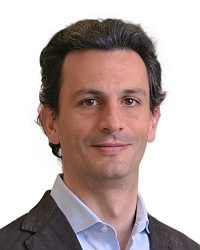TR2014-099
Coordinated Control of a Dual-Stage Positioning System Using Constrained Model Predictive Control
-
- , "Coordinated Control of a Dual-Stage Positioning System Using Constrained Model Predictive Control", ASME Dynamic Systems and Control Conference, DOI: 10.1115/DSCC2014-6114, October 2014, vol. 1.BibTeX TR2014-099 PDF
- @inproceedings{Haghighat2014oct,
- author = {Haghighat, S. and {Di Cairano}, S. and Konobrytskyi, D. and Bortoff, S.A.},
- title = {{Coordinated Control of a Dual-Stage Positioning System Using Constrained Model Predictive Control}},
- booktitle = {ASME Dynamic Systems and Control Conference},
- institution = {Dynamic Systems and Control Division},
- year = 2014,
- volume = 1,
- month = oct,
- organization = {The American Society of Mechanical Engineers (ASME)},
- doi = {10.1115/DSCC2014-6114},
- isbn = {978-0-7918-4618-6},
- url = {https://www.merl.com/publications/TR2014-099}
- }
- , "Coordinated Control of a Dual-Stage Positioning System Using Constrained Model Predictive Control", ASME Dynamic Systems and Control Conference, DOI: 10.1115/DSCC2014-6114, October 2014, vol. 1.
-
MERL Contacts:
-
Research Areas:
Abstract:
Dual-stage positioning systems have been widely used in factory automation, robotic manipulators, high-density data storage systems, and manufacturing systems. Trajectory generation and control of dual-stage positioning systems is of great importance and is made complicated by the presence of physical and operational constraints. In this work, we describe how to generate feasible reference trajectories for a dual-stage positioning system consisting of a fine stage and a coarse stage, and how to use them in a model predictive control algorithm for which recursive feasibility is guaranteed. The reference generation algorithm is guaranteed to generate trajectories that satisfy all the constraints for the fine and coarse stages. We also describe a constrained model predictive control algorithm used to control the coarse stage. The simulation results of applying the developed methodology to track a pre-determined pattern is presented.

